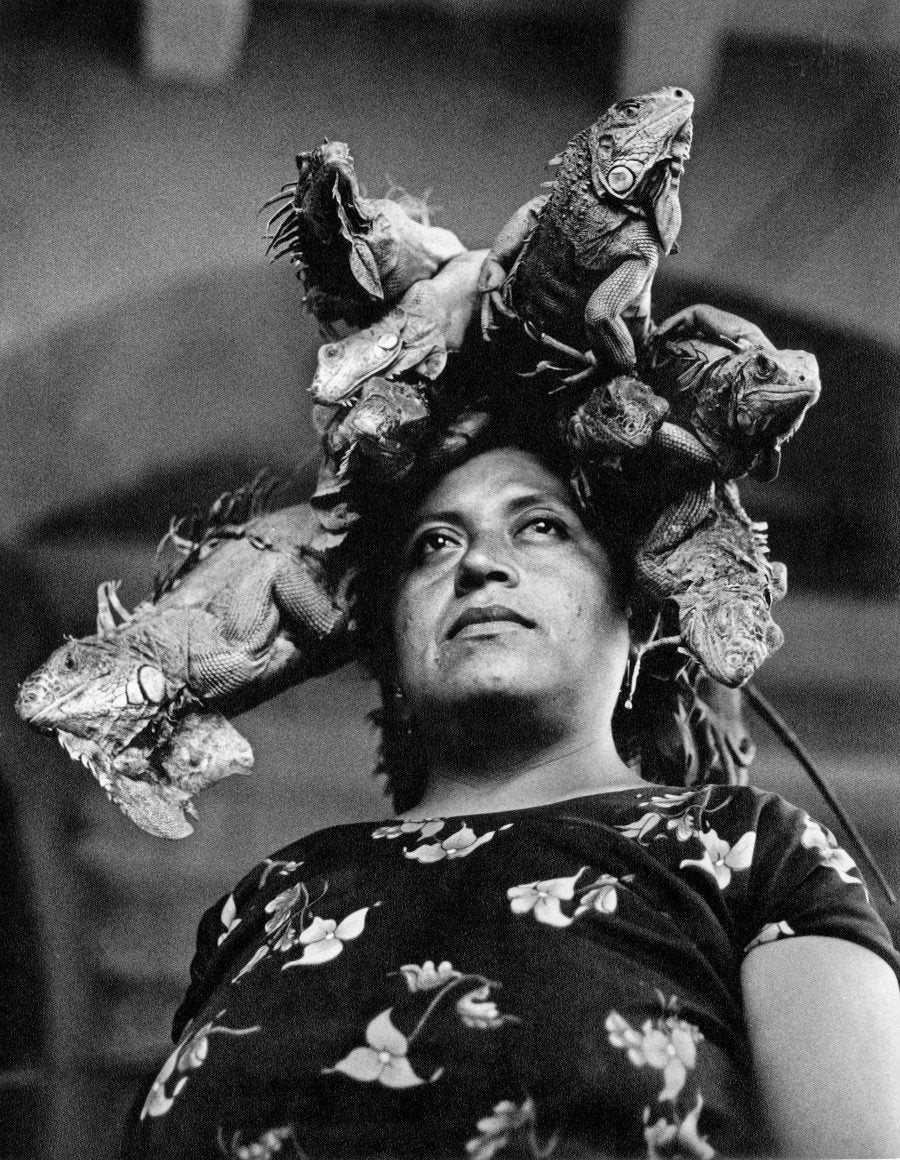Another year, another 366 days of photography, painting, printmaking, drawing, sculpture, performance and more.
As 2016 approaches, two of our culture editors and writers -- Katherine Brooks and Priscilla Frank -- sat down to contemplate the future of art and which emerging figures (or, in some cases, seasoned favorites) we're excited to follow. What resulted is a list of the 17 people we think you should know in the new year, from a 75-year-old painter to a newly minted Instagram star to a textile aficionado who blends West African weaving with Southern quilting.
If you're making New Year's resolutions in the next week or so, make it a goal to explore these 17 artists. From gallery darlings to grassroots icons, this is the multifaceted team of creatives you should watch out for, celebrated through original portraits.
Mernet Larsen
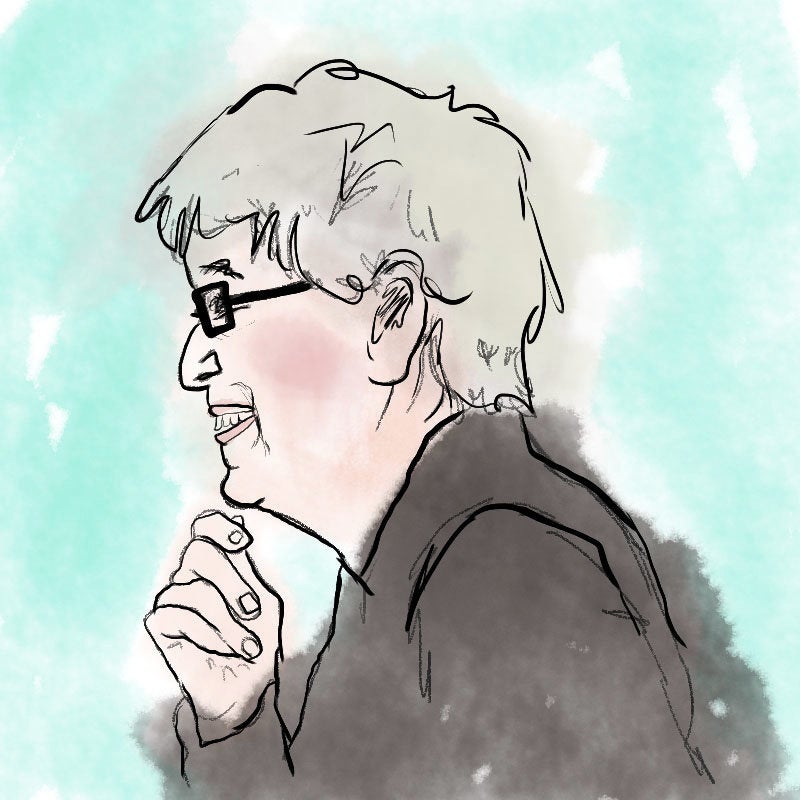
Larsen is a Florida-based painter whose work depicts banal, daily pleasures rendered in awkward angles and beach-happy colors. At 75 years old, Larsen has only recently begun exhibiting her work outside the U.S., though she’s been painting ardently since the 1960s. Her canvases house humanoid figures who’ve been stretched and sharpened like cartoonish origami, often shown enjoying the simple pleasures in life: pizza, reading in bed, exercising. Yet the ordinary becomes quite bizarre through Larsen’s disorienting geometry.
"A lot of people look at my paintings and see alienation because of the geometry,” Larsen told The Huffington Post, “but I always see them as somewhat humorous and somewhat warm, in a very quietly warm way. I'm not about trying to convey alienation. I'm just trying to say here it is. This is the way it is." -- Priscilla Frank
Ala Ebtekar
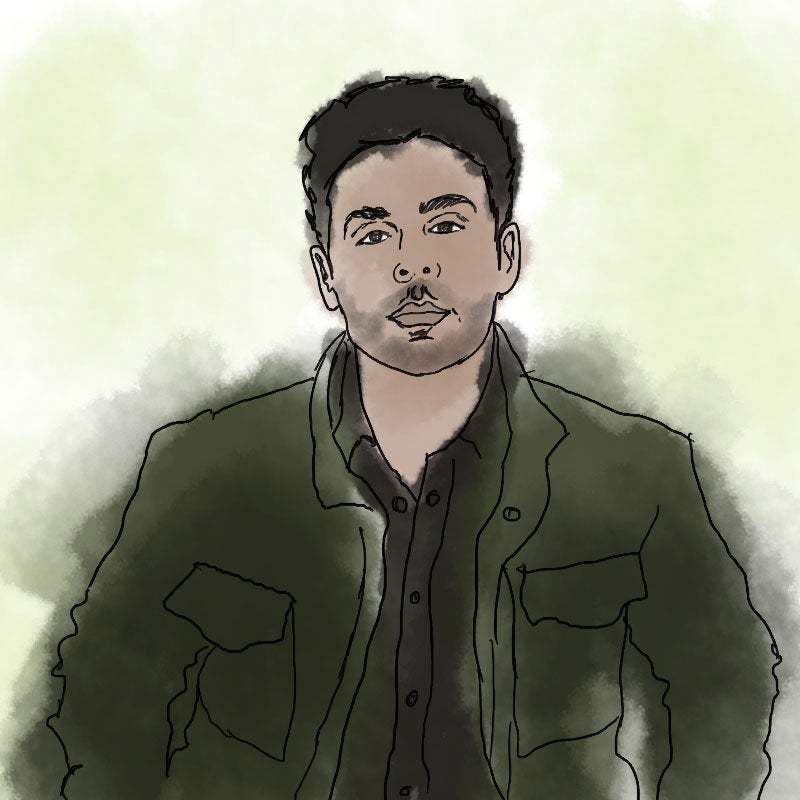
Ebtekar is a San Francisco-based painter and illustrator known to blend aspects of his Persian ancestry and pop culture to create stunning scenes often rendered on what appear to be the pages of traditional text. Whether he's working in two-dimensions or dabbling in installation work, his pieces are reminiscent of both contemporary graffiti and ancient mythological imagery.
"I grew up on the Persian carpet," he explained in a past interview. "No, literally. I used to drive my toy cars around on the carpet. The Persian carpet has a border, with those intricate patterns, and those were my freeways and intersections. To this day, I think that's where my love for patterns comes from." -- Katherine Brooks
Nona Faustine
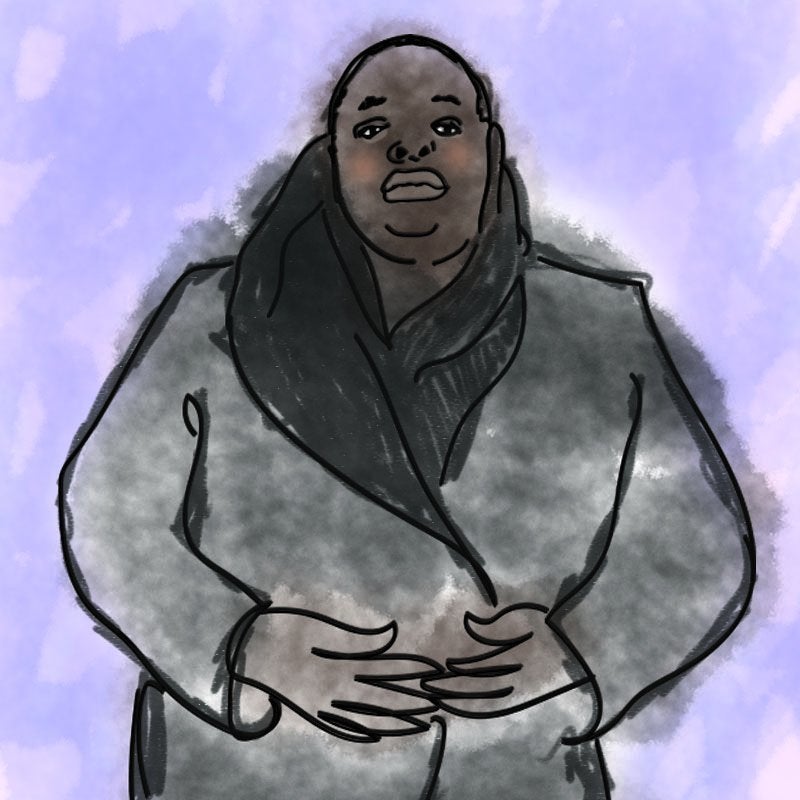
Faustine is a photographer, born and based in Brooklyn, New York. In her photography series “White Shoes,” Faustine revisited New York locations once plagued by slavery. Faustine incorporates her naked body into the images -- sometimes marching up the steps to City Hall or lounging on the rocks of the Atlantic Coast, exposing her vulnerability while rendering herself almost anonymous. Inspired by artists including Zanele Muholi, Lorna Simpson, Kara Walker and Grace Jones, Faustine’s work recalls a history that’s often buried and forgotten, juxtaposing past atrocities with present injustices.
"The images are my truth," Faustine said in an interview with HuffPost. "My work is situated inside a photographic tradition, while questioning the culture that bred that tradition ... I often feel like an ethnographer or anthropologist. Ours is a haunted, incomplete history, one that contradicts what we are taught about this country and its people. We must acknowledge and pay tribute to those that founded and built this country. Not just some of them, but all of them. Like the thousands of Africans buried under lower Manhattan, there are others in long forgotten places." -- Priscilla Frank
Rupi Kaur
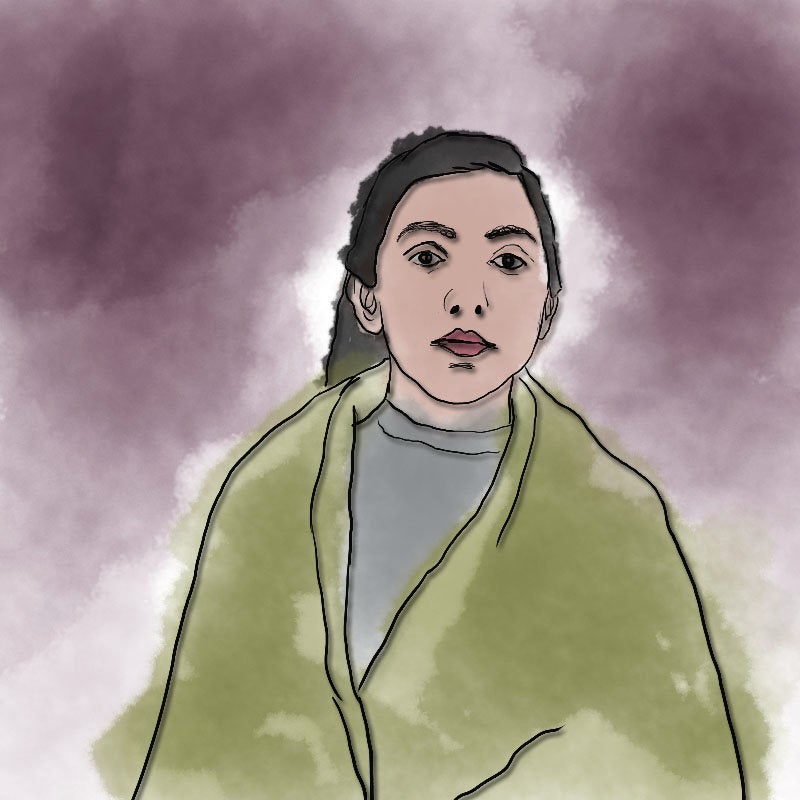
Rupi Kaur, the poet and visual artist who posted the "period photo" that rocked Instagram earlier this year, was just an art student when her work went viral. In an interview with The Huffington Post, she explained how a class assignment morphed into an Internet sensation thanks to the photo sharing platform's ambiguous censorship methods coupled with the general stigma associated with menstruation.
Kaur recently published a collection of poems dubbed Milk and Honey, but I'm excited to see what the young artist brings to 2016. "I understand that anything I create after this might not cause such a stir," she remarked in the interview with HuffPost, "but I feel good about the fact that I've gotten so much attention and I've grown an audience and I can share my work." -- Katherine Brooks
Paul Anthony Smith
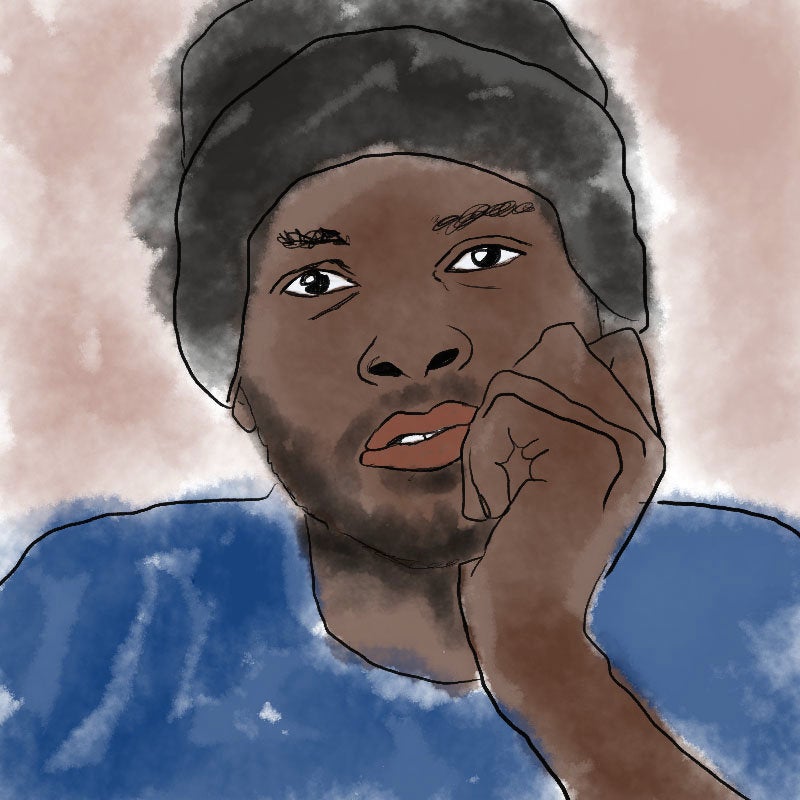
Multimedia artist Paul Anthony Smith combines photography, painting, printmaking and sculpture to produce darkly mesmerizing portraits. Based in New York, he often begins with photos he takes during trips back to Jamaica, where he was born, that reveal the faces of friends, family and community members. He then transforms the images using paint, prints and other means, evoking the slightly sweet and sometimes sinister act of putting on a mask.
"Smith has noted that a compelling aspect of tribal masks is their symbolism of human’s duality between body and soul," Zieher Smith & Horton gallery notes online. "[His work] can ultimately be seen as an optimistic reflection of a world where human spirit transcends the material, self-awareness trumps stereotypes and community is collateral." -- Katherine Brooks
Rebecca Goyette
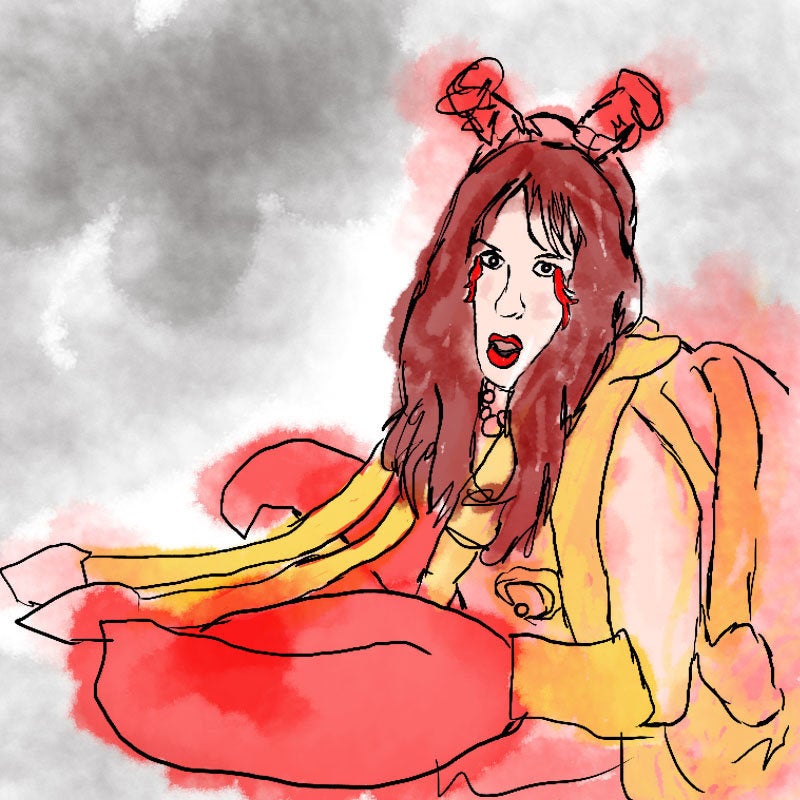
Goyette is a New York-based multimedia artist whose work explores sexual fantasies transgressive, queer and outlandish. You may know her by her X-rated alter ego, Lobsta Girl, the star of a feminist lobster porno/hard-core, interspecies romp that toys with traditional gender roles, sexual agency and the multiplicity of desire. For any lady who’s felt alienated by the dull predictability of most heteronormative porn, I highly recommend watching Goyette get it on in boxing gloves-cum-lobster claws, squealing on a sailboat while seagulls caw in the background.
“I’m from Massachusetts originally, and my initial interest in the lobster is connected with New England folklore,” Goyette explained to Slutist. “Digging a bit further, I discovered how lobsters have sex. The lobster female is initially the sexual aggressor, choosing only the strongest males. She boxes the male down, squirts him with aphrodisiac drugs and gets inside his cave to have sex. But in order to have sex, she has to molt her shell completely, leaving her submissive to the male.” -- Priscilla Frank
Tschabalala Self
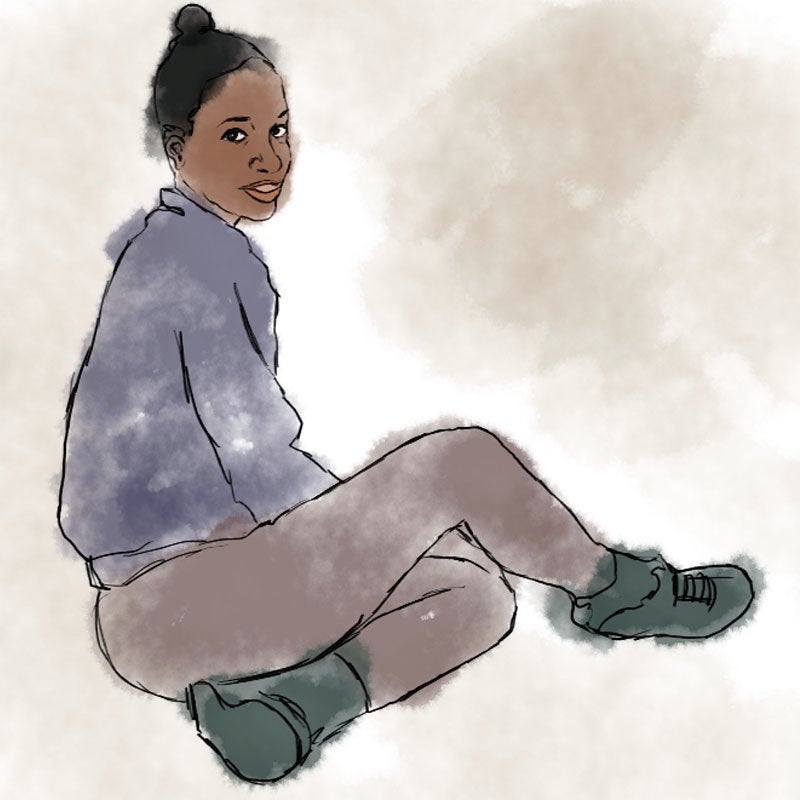
Self is a painter and printmaker who earned her MFA from the Yale School of Art in 2015. Her collage-like work, reminiscent of Wangechi Mutu, dissects and reimagines a woman's body, exploring the beauty and adulteration of fantasy. Combining bright hues and captivating patterns, she physically twists and transforms the appearance of a human form, forcing the viewer to pore over her images as if they are necessary detectives, or, unnecessary voyeurs.
"My current body of work is concerned with the iconographic significance of the Black female body in contemporary culture," she writes on her website. "I hope to correct misconceptions propagated within and projected upon the Black community in regard to Black femininity ... My project is committed to this exchange, for my own edification and of the edification of those who resemble me." -- Katherine Brooks
Nicki Green
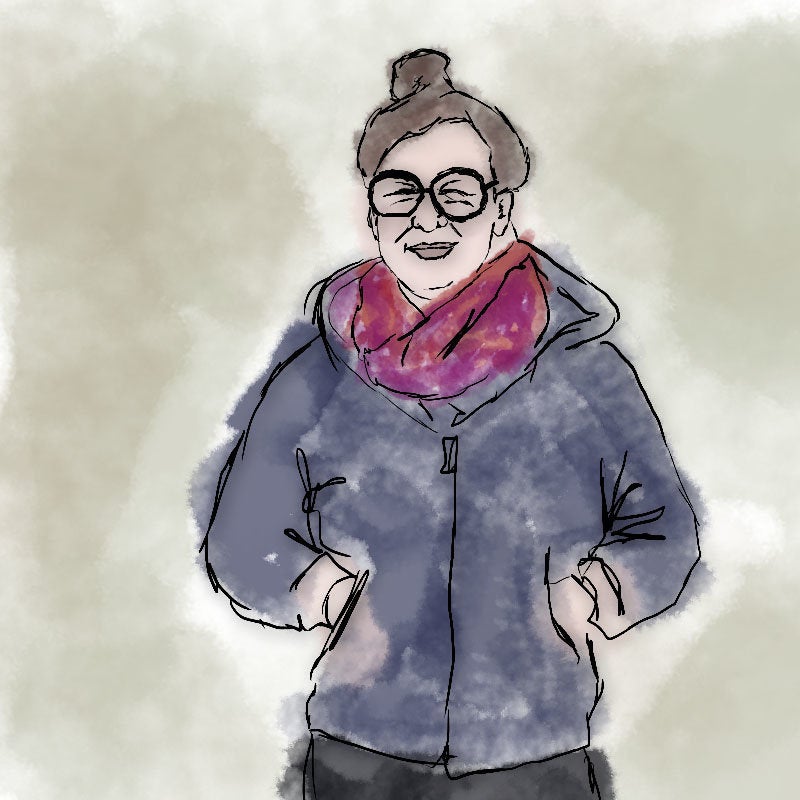
Green is a Bay Area-based artist whose craft-based works, namely ceramics and textiles, provide visibility to marginalized communities. Much of her ceramic work resembles traditional pottery or Judaica from a distance, but a closer look reveals a bountiful harvest of vaginas, tongues, butt cracks and phalluses.
Her series “Small Venus” revisits classical mythology, reimagining Venus as a trans woman. As Green explains in her statement: “I am interested in the notion of ‘birthing,’ as a Creation process parallel to the notion of self-creation or ‘doing’ presentation (so commonly discussed in trans politics and gender theory), and use Venus' recognizability as an entry point to the idea of mythologizing the trans body as an act of empowerment.” -- Priscilla Frank
Brendan Fernandes
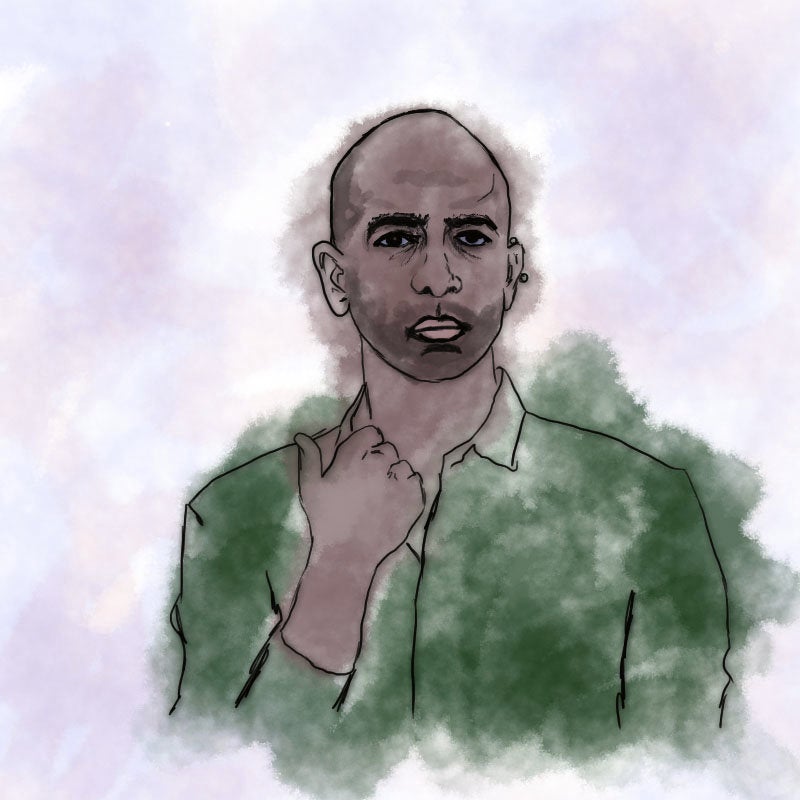
Fernandes is a Canadian performer and scultpor of Kenyan and Indian descent whose work often explores the myth of authenticity and the hybrid nature of identity. For his piece in the travelling exhibition “Disguise,” Fernandes showed a herd of 12 fiberglass deer, the kind used as hunting bait, donning identical white resin masks, replicas of the African-esque masks sold on Canal street. The sterile creatures allude to a certain heritage or history, though all aspects of them are fake, built out of thin air.
“We have two fake objects,” Fernandes told The Huffington Post. “The mask itself embodies the political attributes of a Kenyan nomadic male warrior, but in Kenyan tradition we don't wear masks. So somebody made this mask up and sold it as a souvenir in an African market on Canal St. These fake masks that have their own identity that's made up and created. How is that real? How is that authentic?... Hybridity is something I'm contemplating. The idea of becoming, queering, a transitional space." -- Priscilla Frank
Dominique Pétrin
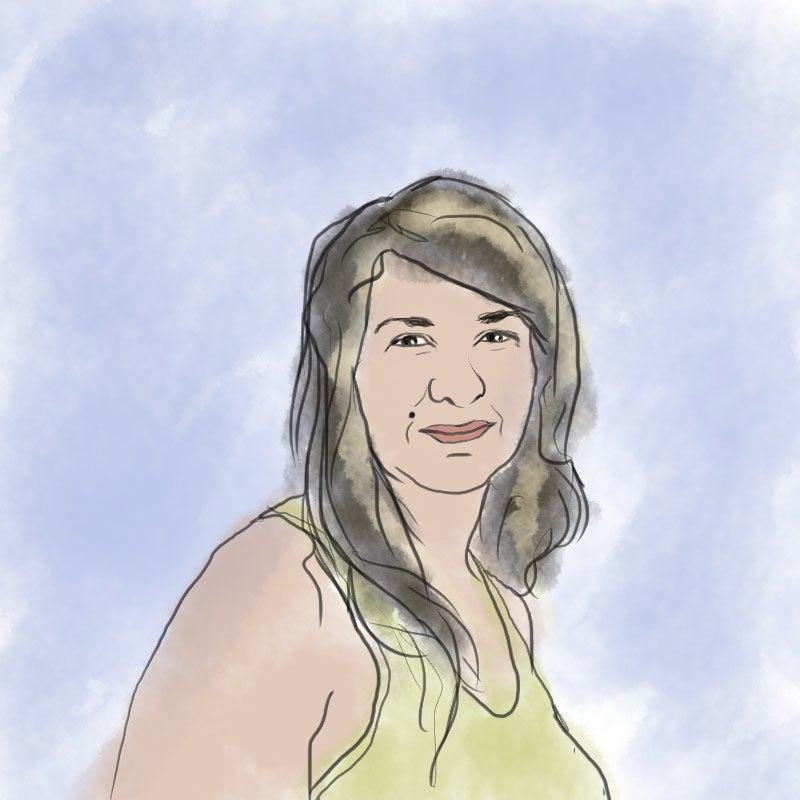
Pétrin is a multidisciplinary artist from Montreal who works in performance and visual arts to create "altered states of conscience and perception, be it through cognitive or visual illusions, or, for her performances, the use of hypnosis." Take a peek at her website, and you'll see a burst of geometric design and neon color, punctuated by repetitive patterns and cartoonish imagery that subtly transforms familiar settings like living rooms and metro stations.
The former member of the band Les Georges Leningrad (she was also known as Pony P) recalled her relationship to color and performance in an interview with Opening Ceremony: "Color is everything. I’ve been extremely sensitive to it since I was a kid. I’m a color nerd ... I improvise most of my installations in situ, which makes the installation process explorative ... The overall assemblage experience is as important as the work itself. This is intimately connected to performance, but on a very personal level.” -- Katherine Brooks
Kenya (Robinson)

Multimedia artist Kenya was raised in Gainesville, Florida, before earning her MFA in sculpture from the School of Art at Yale University in 2013. Her work, in both performance and sculpture, mines themes of privilege and consumerism, prodding our perceptions of gender and race along the way. From "The Inflatable Mattress" to "White Man In My Pocket," she operates under the mantra: "you are more privileged than you think, no matter your gender, socioeconomic status or the color of your skin."
I recommend following Kenya on Instagram to see what she's up to in 2016. -- Katherine Brooks
Alberto Aguilar
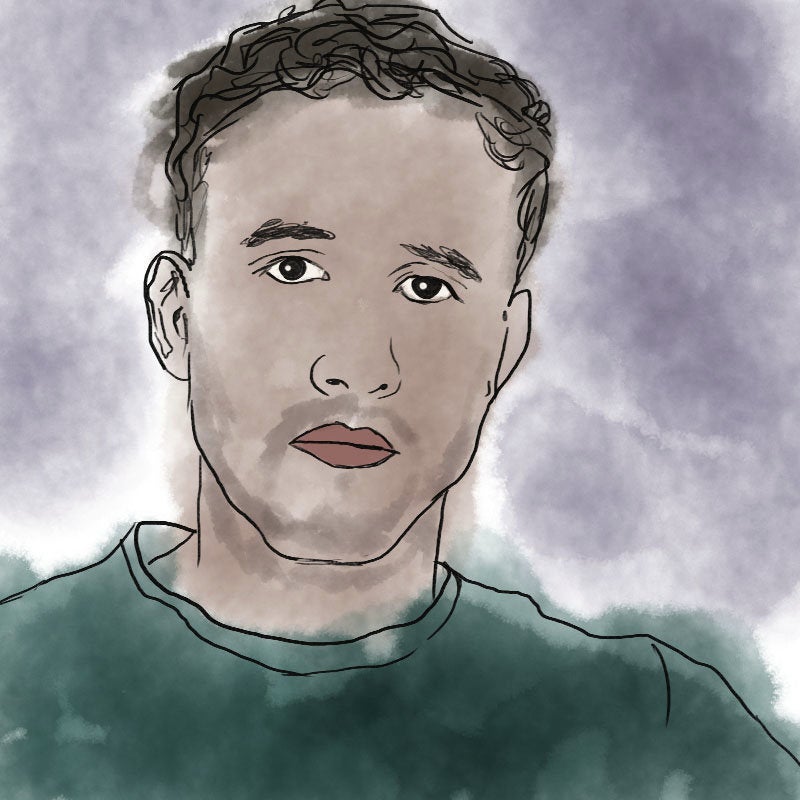
"This is a statement in the form of a letter. This is a statement as an artwork. This is a letter as an artwork. This is a letter as a statement. This is an artwork as a letter. This is a voice recording that I am making as I walk but you are now reading it as a statement made up of letters on a screen."
So begins multimedia artist Aguilar's personal statement, which captures the Chicago native's coy outlook on art. Take "Threewalls," his series of 40 clipboards painted with discounted "mistake" paint from a home improvement store. For the project, he painted clipboards in two three-hour sessions, applying color and markings in strategic but seemingly ordinary ways. He then made drawings on a small legal pad with ink and correction tape, containing each in a heavy duty zip lock bag. Combined together, these components reveal two precise actions in the artist's practice, presented as seemingly arbitrary minutiae.
(Bonus, Aguilar helps to run Pedestrian Project, an initiative that attempts to bring art to all walks of life.) -- Katherine Brooks
Genieve Figgis
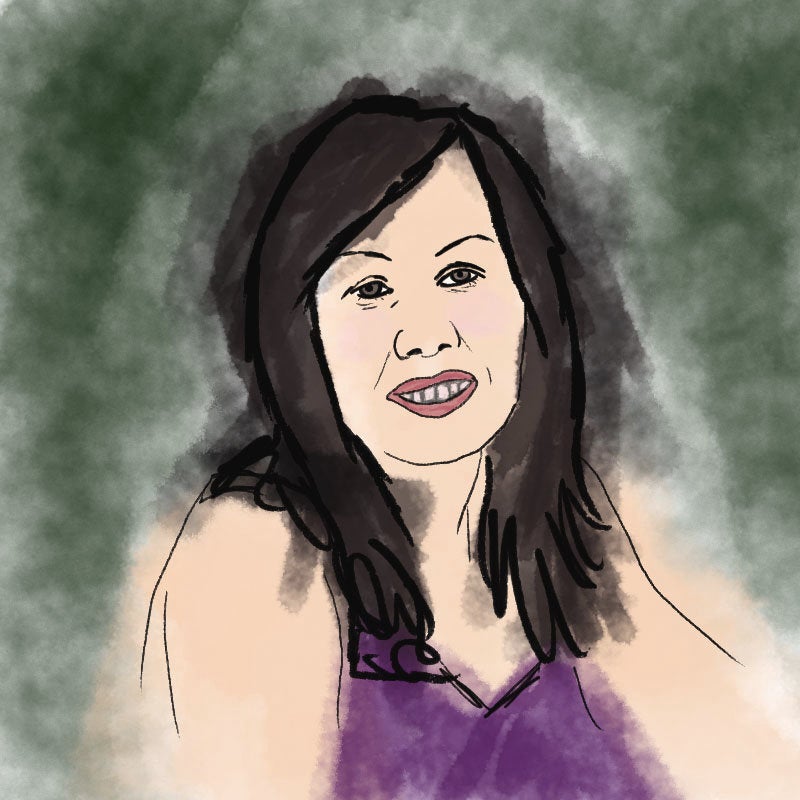
Figgis’ acryclic paintings tell stories of a different time -- a time filled with petticoats, picnics, silver wigs and sidesaddle horseback rides. Yet Figgis’ layers of paint become like frosting turned rotten, as her 18th century idyllic scenes are wonderfully naughty and ghoulish at once. A regal looking nobleman goes down on a nude woman, her pink face obscured by skeletal mush. A banquet crowd smiles at the viewer, revealing the monstrosity of their goopy, toothy grins. In other paintings, she renders classic erotic paintings like “Olympia” and “Les Demoiselles d’Avignon” with an extra dose of nasty, the male gaze mutating into a melting mess before your eyes.
"When we’re little we’re brainwashed with history that’s just facts and dates,” Figgis told GQ. “I try to imagine it back to life with more reality and a sense of humor. Being Irish, you have to have a wicked sense of humor. Some think my work is dark, some think it’s crazy, some just think it’s hilarious." -- Priscilla Frank
Vanessa German

German, based in Pittsburgh, is known for totemic sculptures she dubs “power dolls,” which she collaborates on with kids in her neighborhood. Working in her basement, which she’s transformed into what she calls the Art House, German uses found materials to create mixed media assemblages reminiscent of Betye Saar and Joseph Cornell. The dolls become energy totems, bolstered with the strength of numerous hodgepodge objects with forgotten histories.
“People do renovations and literally dump everything in the alleyway, so I can find great materials off the street,” German explained to The Huffington Post. “People are always dropping things off at my front porch. Somebody’s grandma died and she collected those travel spoons, and they gave me her collection. Somebody else, his partner was a drag queen and she left all her drag shoes. Huge, beautiful, glittery, stacked drag queen shoes.” -- Priscilla Frank
Aidan Koch
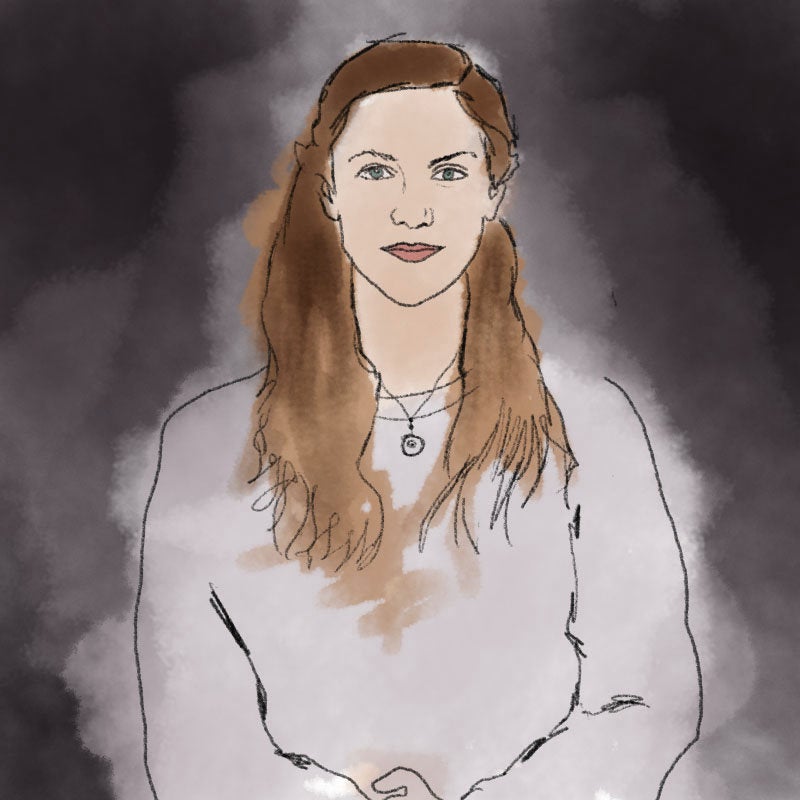
Koch is a comic book author and artist born in Olympia, Washington, and currently based in New York. Koch's luscious style lands somewhere between Egon Schiele and Raymond Pettibon, sans the male gaze, often emblazoned on pinkish, peach and yellow backgrounds with enveloping dashes of white, blue and black. Works like Heavenly Seas amount to beautifully fragmented stories told in words and pictures, which can excite fans and frustrate dissenters.
"Some people are irritated by not understanding what’s going on," she explained to The Paris Review, "whereas others are excited by that, excited to reread it and try and figure it out. Part of the point is that there is not necessarily a definitive view, so the more you read it, the more you might pick up on other details and see how they relate to each other." -- Katherine Brooks
Diedrick Brackens
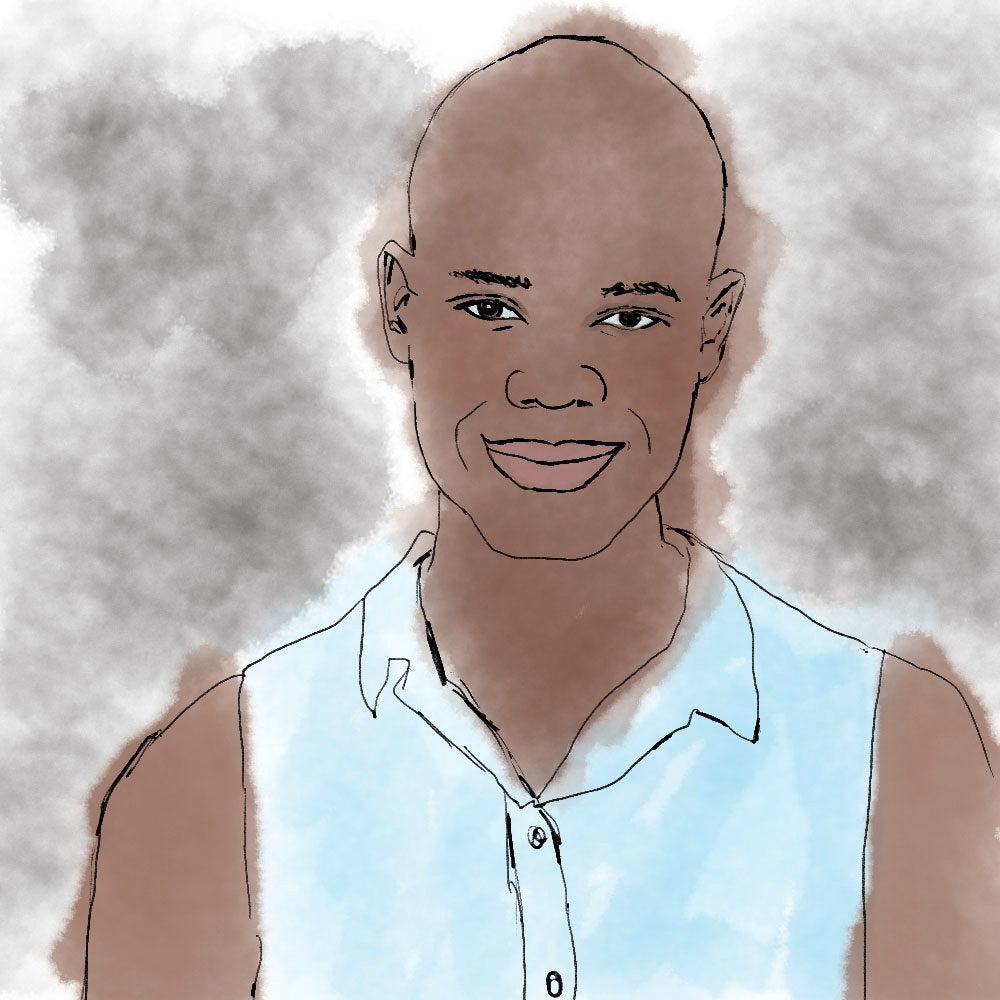
Brackens’ category-jamming textiles interweave elements of European tapestry, West African weavings and Southern quilting techniques. His works, somewhere between painting and sculpture, folk and fine art, rest partly on the wall and partly on the floor. Combining elements of domestic craft with various artistic traditions, Brackens sometimes opts for commercial colors, other times, he creates his hues from tea, wine and bleach, yielding a fleshy shade that alludes to bodily fluids and the gay vernacular.
“I can use the medium (weaving) to talk about my identities as a black, gay man in America,” Brackens explained in an interview with The Daily Californian. “I pull on textile traditions from the cultures that are a part of my makeup: European tapestry, strip-woven kente cloth of Ghana, and the quilts of the American South. Through weaving and sewing, I am able to make a fabric that fully integrates all parts of my experience.” -- Priscilla Frank
Kaye Blegvad
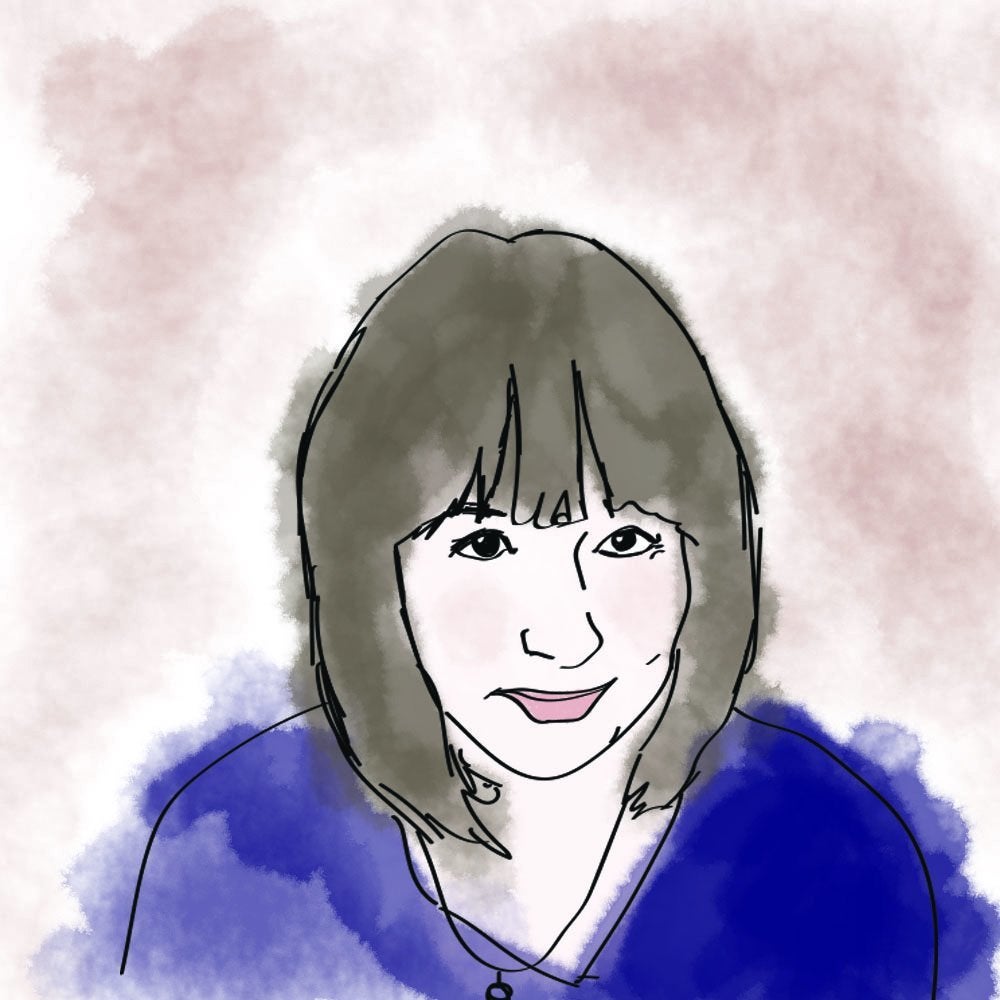
London-born, Brooklyn-based Blegvad describes herself as an illustrator, designer and "general maker-of-things" who moonlights, every so often, as a ceramicist. She crafts everything from provocative jewelry -- think of a pin depicting a nude woman leading another naked lady on a leash -- to similarly romantic illustrations that render female figures in fantastical scenes.
One of my favorite pieces happens to be a ceramic pipe that turns traditionally masculine smoking devices on their heads, literally. Instead of a phallic piece, she dares her fans to puff out of a delicately painted woman's ponytail. -- Katherine Brooks
Also on HuffPost Arts:

